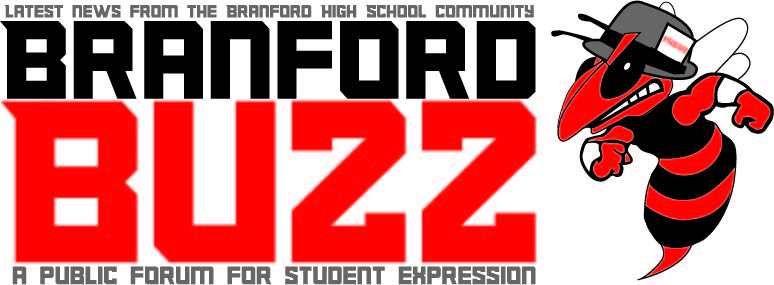By Grahm Reynolds
Branford High School’s hybrid learning model has been in place for eight weeks, and students and faculty alike are still adjusting to it with mixed results.
Many of those in the BHS school community – students, parents, faculty – say that hybrid learning is the best possible model of learning for the situation we find ourselves in. Under hybrid learning, students are separated into two cohorts – orang and blue. Each cohort attends in person two days a week and remotely two days a week. Wednesdays are set aside for all remote classes.
“I don’t really see hybrid learning as an effective method,” said junior Sushant Kunwar. “But it’s by far the best BHS can do to provide an effective learning experience.”
Linda Mollow, mother of two students at BHS, said “Hybrid learning seems to be more effective than the fully remote learning from the spring semester of 2020.”
These sentiments are echoed by BHS principal Lee Panagoulias, who said “In the current environment, the hybrid model of learning can be effective in supporting our students as learners and implementing mitigating safety strategies for our students, staff, and community.”
At the time of writing this article, there have been eight cases total of Covid-19 in Branford Public Schools since school started. There have been three cases at Branford High School.
As principal, Panagoulias said that the biggest challenge with hybrid learning was re-inventing everything. “From entering the building, to connecting students in school with those at home, to how we celebrate achievements in our school, we’ve had to rethink everything,” he added.
Of course, students and parents face different challenges. Kunwar said that “One class is essentially two distinct classes.” He explained that although the two sets of people (at home and in-person) are learning the same things, they each have to go through different processes, and that makes it “very difficult to communicate with each other.” Fellow junior Tyler Jarvis had similar thoughts, saying “It is very hard to regulate our own learning from home.”
Mollow says “The amount of screen time for school and recreational use is what we will look back on – unfavorably.” Most problems people have with the hybrid model come from the virtual portion of school. However, this delicate balance between an effective learning experience, and safety, is one that Panagoulias hopes that hybrid learning fits.
Safety from the global pandemic seems to be the number one priority on everyone’s minds right now. To accomplish that, both students and faculty need to work together. Panagoulias believes that BHS has succeeded in that. “Teachers and staff have risen to the occasion, learning new technology, collaborating with their peers to solve problems that arise. Students have been awesome. I think they fully understand the situation we are in, and have worked with us to create a safe learning environment for everyone.”
Mollow expressed similar thoughts, saying “I have been so impressed with the way teachers have adapted to all of the changes that have been thrust upon them by this pandemic” Safety measures at BHS include mandatory masks, one way hallways, and of course, only having half the kids in the building at a time.
Many positive things have come out of hybrid learning. Mollow believes the best part of hybrid learning are the in person days. She says “[in person] helps maintain social relationships and strengthen the connection between teacher and student.” Kunwar agrees saying “the classroom experience is by far the best part of hybrid learning.” He elaborates, saying that he as a person learns much better in person and looks forward to Thursday and Friday, as he is in the orange cohort.
Panagoulias said hybrid learning “has been challenging, but it has also brought out the best in people. We have come together as a community to support each other. Teachers, students, and families have demonstrated what it means to be Branford Strong.”
Discover more from Branford High School Buzz
Subscribe to get the latest posts sent to your email.


One Reply to “BHS Working Through the Challenges of Hybrid Learning”
Comments are closed.